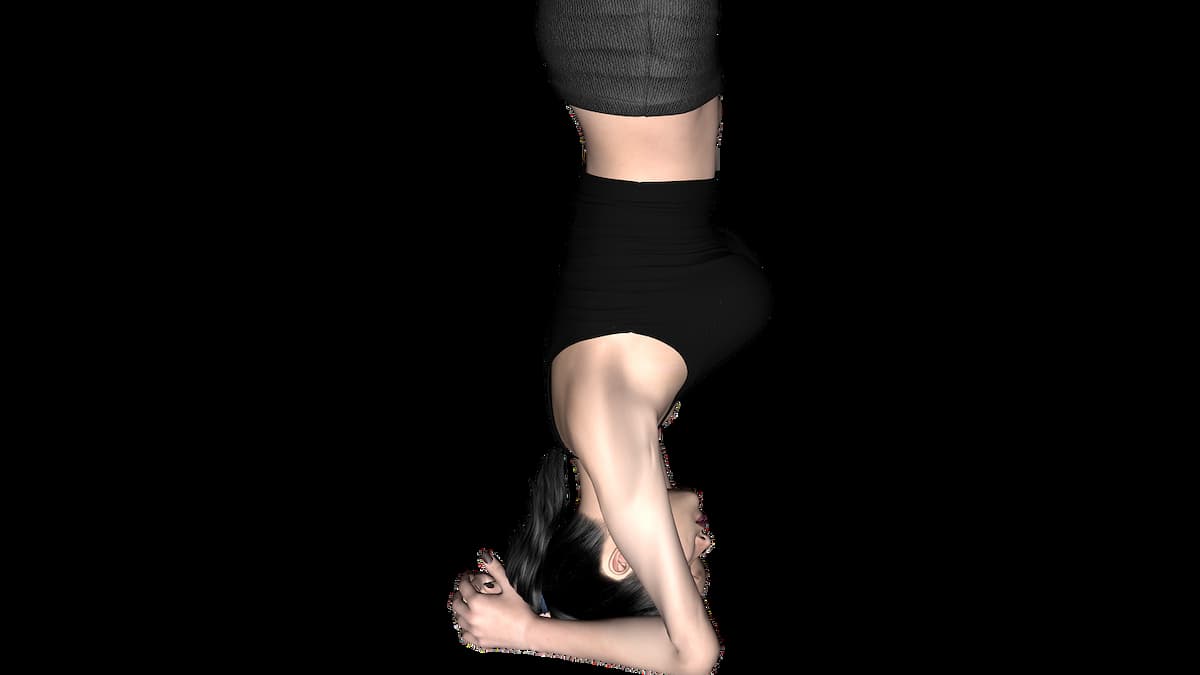Introduction
Viparita Karani is an inverted yoga pose that involves lying on the back with legs extended vertically upward. It is similar to the Shoulder Stand. Some people call this pose Legs-up-the-wall-pose. It is also one of the twenty-five yoga Mudras described by Gheranda Samhita, the ancient yoga text.
This article explores this practice as a yoga pose and also as mudra. This gentle inversion has numerous benefits, including stress relief, improved circulation, and relaxation. Join us as we delve into the practice of Viparita Karani and its varied aspects as both pose and mudra.
Viparita Karani Meaning
The Sanskrit word viparīta ( विपरीत ) means upside down or inverted. Likewise, karaṇī means a practice. So, Viparita Karanai means an inverted practice. Correctly speaking, Head Stand and Shoulder Stand also come under this definition. In certain yoga lineages, Viparita Karani means Head Stand.
Is Viparita Karani Asana or Mudra?
Vaiparita Karani is commonly taught as a yoga pose rather than a mudra. But, ancient yoga texts introduce it as one of the major mudras. In modern Yoga, it is better known as a yoga pose—the basic difference between this practice as a yoga pose and as a Mudra is its duration. Let me explain this in detail.
Mudras are symbolic yoga gestures that indicate the specific desired results. That said, each Mudra has a specific goal for practice. Yes. You guess it right. Vaparita Karani as a Mudra has a specific goal.
The goal of this practice as a Mudra is to stop the downward dripping of elixir or nectar from the Soma Chakra located at the back of the head just behind the eyebrow center. This is Bindu Visarga Yoga.
Because of the inverted position, we could stop the downward dripping by gravity. Hence, any practice of inverted yoga poses, whether it is the Shoulder Stand or Head Stand, can be used as a Vaiprita Karani Mudra. To get the benefits of this practice as a Mudra, the duration should be longer.
Hence, it is clear that if you practice an inverted posture for a longer duration, it is Mudra. If not, the performer gets only the benefit of that practice as a yoga pose. In the Mudra version, you will get the benefits of both.
Viparita Karani Steps
Those who could perform the Head Stand may continue the yoga pose as Mudra by slowly increasing the duration. It is most suitable only for people who have mastered the Head Pose from a younger age. As far as my knowledge, it is not advisable to start at middle age or later.
Shoulder Stand is the most viable option for most people. However, persons having health conditions like High Blood Pressure and neck Issues should exercise caution.
You can do even the legs-up-the-wall pose. Any Pose where your neck is above the head is Viparita Karani.
Swami Sivananda of Divine Life Society in his book mentioned that there was one Yogi of his time by the name of Pandit Raghunath Sastri of Badrinarayan used to practice Head Stand for two to three hours. I think this is the one recent example of of Yogi who practiced this as a Mudra.
Viparita Karani Vs Sarvangasana
People, even famous Yogis of the modern era lacked this understanding. They coin a version that is a slighter variation of Should Stand. As per their version, if the Chin is touching the chest, it is the shoulder stand. The same shoulder Stand where the chin is not touching the chest is Viparita Karani. This misunderstanding came out of the lack of knowledge in classical yoga texts.
Notably, Hatha Yoga Pradipika describes the yoga pose which is now known as Head Stand in its Mudras section. The text names the practice Viparita Karani Mudra. This is not the only proof. We could find many proofs like this Yoga Upanishads. So, as per ancient yoga texts, both Head Stand and Shoulder Stand are Viparita Karani.
Dr. Paul Brunton in his book titled The Secret Search in India narrates his travel history of India during the nineteen-twenties. He met a yogi in Madras who demonstrated Sarvangasana and explained its benefits.
Viparita Karani Mudra Benefits
Sri. T. Krishnamacharya Calls this Pose the King of Yoga Poses.
The main benefit of this yoga practice is the Kundalini Activation. So, it aids the Yogi in the path of Spirituality.
Also, by this Mudra, the Yogi Can perform Bindu Visarga Yoga. This stops the downward dripping elixir. So, it prevents all diseases, old age, and premature death. This is as per ancient yoga texts.
The longer duration of practice improves the condition known as Varicose Veins. Besides, the muscles of the lower body get relaxed.
Final Words
We can practice even Head Stand or Shoulder Stand as Viparita Karani Mudra. If you practice them for a lesser duration, they are yoga poses. Likewise, if you practice them for a longer duration, they are Mudra. Today, practicing it as a yoga pose is more relevant than as a Mudra.
